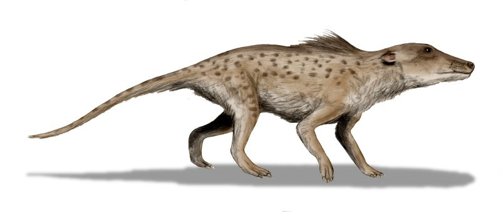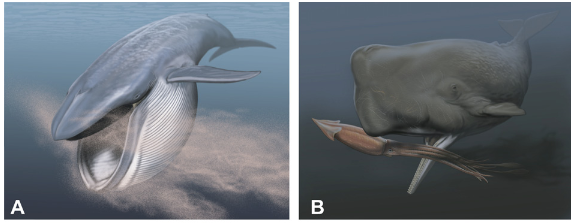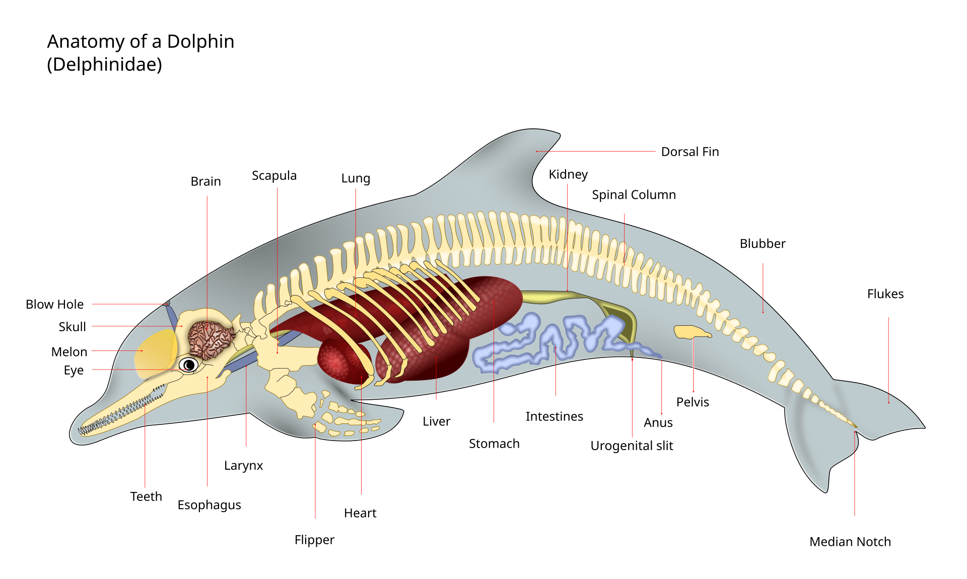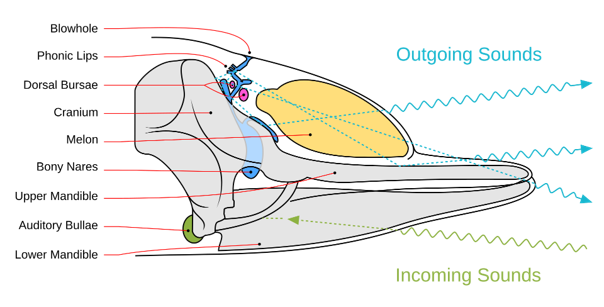The taxonomic classsification of Cetaceans, including dolphins, porpoises and whales is under discussion due to recent molecular and genetic studies. The most recent systematic study, so far, is by McGowan et al., 2020. To elucidate the phylogenetic relationships within the Cetatea, they sequenced protein coding genes for 68 cetacean species and their close relatives including the pygmy hippopotamus (Download the paper here). Earlier work of the McGowan group (McGowan et al., 2011) is used to construct the figure on the right.
Cetaceans originated from the clade of terrestrial even-toed (Artiodactyla) ungulate (hoofed) mammals. See Gatesy et al., 2013 for an extensive overview of the evolution of Cetacea.
The ancestor of today’s cetaceans is believed to be Pakicetus (from Pakistan), a four-legged land mammal measuring 1 to 2 metres long (See picture below). Skeletons discovered in Pakistan indicate that the animal had typical artiodactyl ankles for running and a typical cetacean skull and inner-ear morphology. Cetaceans thus have a common ancestor with modern-day artiodactyls such as the cow, the pig, the camel, the giraffe and the hippopotamus. In fact the latter is the most related to cetaceans. After their transition to the sea, cetaceans further diversified into two groups with unique adaptations. Baleen whales (Mysticeti (A)) lost their teeth and evolved a batch filter-feeding method using baleen to gather prey, whereas toothed whales (Odontoceti (B), including all dolphins) acquired echolocation to hunt using ultrasonic pulses and a highly specialized inner ear.

Pakicetus inachus, a whale ancestor from the Early Eocene of Pakistan. By: Nobu Tamura; Credits; CC BY 3.0

The two groups of Cetaceans, Baleen whales on the left (A: Balaenoptera musculus (blue whale)) and Toothed whales, inclusing dolphins on the right (B: Physeter macrocephalus (giant sperm whale). Artwork by Carl Buell adapted from: Credits
More detailed information can be found here.

by: Wilfredor Credits; CC BY-SA 4.0
The senses of Cetaceans, which include dolphins, porpoises, and whales, show specialised adaptation that allow them to thrive in the aquatic environment. In addition to the five common mamalian senses: vision, audition, taste, smell and touch, they possess the abilities to echolocate and most likely to discern bioelectric fields and sense water currents DeVreese et al., 2024. As described by DeVreese et al., 2024, cetaceans, like all mammals, rely on a multisensory integration of these stimuli to build a detailed picture of their environment and make decisions based on the information they receive. This process involves a complex interplay between their physical sensory systems and the brain, which is responsible for integrating and processing information from different sensory modalities to form a cohesive understanding of the environment.
Simplified overview of the signal pathways of the various sensory systems in the generic dolphin. Based on: DeVreese et al., 2024
More detailed information can be found here.
The melon is the prominent fatty tissue that sits between the brain and the tip of nose. The function of the melon is not completely understood, but it is believed to be a bioacoustic mass, that enables to focus sounds used in echolocation.
Structures involved in echolocation in Dolphins

By Joola Credits; CC BY-SA 4.0
More detailed information can be found here.
Tonny Mulder - University of Amsterdam